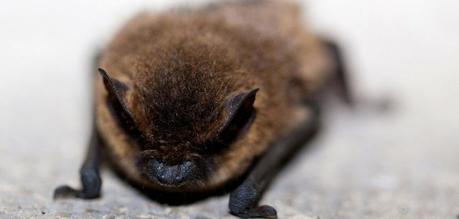
White nose syndrome (WNS) is a deadly fungal disease that has been spreading among bats in the northeastern United States since 2006, leaving millions of bats dead or in hibernation as winter approaches.
Its name comes from the white fungus that grows on the noses and wings of infected bats, but there's more to this disease than just this visible symptom.
Read on to learn about what WNS is and how it affects both humans and wildlife.
What is white nose syndrome?
White nose syndrome (WNS) is a disease that affects bats. This condition was first observed in 2006 in the U.S., where it killed over one million bats of various species.
The cause is a fungus called Pseudogymnoascus destructans (Pd). The fungus grows on the bat's skin near their nostrils and its spores are released into their environment with the bat's exhaled breath.
Bats have a keen sense of smell, but cannot detect the Pd spores until they have already been infected for some time. Once infected, WNS causes lesions on the bat's wings which prevent them from flying and thermoregulating properly.
Bats' immune systems do not defend against this fungus well because they are used to dealing with bacteria instead of fungi; additionally, bats can carry this pathogen without having any signs or symptoms themselves.
History of white nose syndrome:
In the winter of 2006-2007, a bat expert in New York State noticed large numbers of dead bats on the ground. The following winter (2007-2008), he found more dead bats than ever before.
He also noticed that many had a white fungus on their noses that was later identified as Pseudogymnoascus destructans. It is still unknown how this fungus is spread to bats.
There are three possible ways that P. destructans can infect bats: 1) Bat to bat contact 2) Bats picking up spores while roosting 3) Spores landing on bats while they hibernate.
The fungus has killed an estimated 6 million bats since its discovery. Without natural predators or prey, this disease will have a devastating effect on our ecosystem and may eventually lead to human death.
The fungal infection has been spreading across North America at an alarming rate with confirmed cases being found in all but two states.
White nose syndrome mainly affects little brown bats and it's believed that there could be less than 300,000 left in North America.
How does it spread?
White Nose Syndrome spreads to other bat colonies through bat droppings that contain the fungus. It can also spread by direct contact when two bats come in contact with each other while they are hibernating.
There is no evidence of white nose syndrome spreading from one animal to another or from an animal to a human. Humans should avoid handling bats as this could lead to infection.
Bats who have white nose syndrome will awaken more often during hibernation causing them to use up their fat stores, which makes them more vulnerable to death from starvation and cold weather.
They will awaken frequently enough so that their metabolism won't slow down enough for them to enter into a state of torpor needed for survival during winter months.
What are the symptoms?
White nose syndrome (WNS) is a disease that affects bats. It first appeared in 2006 in the Northeastern United States. There are several different kinds of bats that get white nose syndrome but the most common type is called the little brown bat. In this type of bat the fungus infects the skin on their nose, which causes them to wake up more often during hibernation.
This makes them lose energy and eventually starve to death. The fungus also can spread to other parts of their body like their ears or wings. It's not clear how people can catch white nose syndrome but it has been seen in humans who enter caves where infected bats live.
When people have come into contact with infected bats there have been reports of having skin irritation from contact with the saliva. What triggers the itching is unknown. If a person comes in contact with an infected bat then they should wash their hands as soon as possible to keep themselves safe.
How do I treat my sick bat?
If your bat has contracted white nose syndrome, or WNS for short, there are a few things you can do to help it get better. First, if the bat is active during the day when it should be sleeping then remove it from its usual habitat as soon as possible.
Second try to identify what made them sick in the first place and address that issue. If these two steps don't work then call a vet who can prescribe antibiotics for your bat.
The best way to avoid having bats contract white nose syndrome is by making sure they are warm enough at all times of the year. It's recommended that they have a space heater on 24/7 in their house during colder months.
As well as providing an appropriate space heater make sure you also provide clean water daily and change food every other day. Additionally keep their house clean by vacuuming often and cleaning out droppings with an old toothbrush.
Is there a cure?
As of now there is no cure for white nose syndrome. The best course of action is to contain the disease and prevent it from spreading to other bat colonies. To do this, it's recommended that any person who visits an area with a known infestation wear masks and gloves or clothes that cover as much skin as possible.
If you find dead bats during your visit to a cave or mine in an area where there are white nose symptoms present, contact your local wildlife agency or conservation officer immediately so they can collect specimens for testing and learn more about the disease's spread.
Diagnosis of white nose syndrome:
White nose syndrome is a fungal disease that has been infecting bat populations in the United States since 2006. It is spread by spores from the fungus Pseudogymnoascus destructans. The most common symptom of white nose syndrome is a white film on the animal's muzzle.
Other symptoms include weight loss, lethargy, excessive thirst or hunger, abnormal behavior such as flying during the day, and skin lesions around their eyes or other areas of their face.
There are two types of white nose syndrome; primary and secondary. Primary WNS typically occurs when bats hibernate underground in caves where the fungus can live for many years without contact with other bats or people.
Secondary WNS usually occurs when bats hibernate in non-natural settings such as barns, attics, mineshafts, etc., which are more susceptible to environmental changes like temperature swings.
Risk factors for white nose syndrome:
White nose syndrome is caused by the fungus Pseudogymnoascus destructans. The primary risk factor for white nerve syndrome is proximity to hibernacula where the disease has been detected.
Risk factors also include being a bat roosting in an area that has been historically occupied by bats with white nerve syndrome. Other factors that may contribute to the development of white nerve syndrome include population density and species mix.
In particular, certain tree species are susceptible to white nose syndrome. In Pennsylvania, all eight bat populations living in trees that were killed by the Dutch elm disease had succumbed to white nerve syndrome.
Prevention tips:
The best way to prevent white nose syndrome is to limit the number of bats in your home. If you do have a bat infestation, don't be afraid to call for professional help. The sooner you get rid of them, the less likely they are to spread the disease.
WNS can also be prevented by wearing gloves while gardening or hunting to avoid coming into contact with bat droppings or by wearing a mask when cleaning up after such activities. There is no vaccine available to protect against it, but it is possible that future generations will develop one.
Conclusion
White nose syndrome (WNS) is a disease that has been infecting bats for the last two decades. The fungus that causes the disease is called Pseudogymnoascus destructans. This fungus lives in the soil and enters through a bat's skin. To date there are no treatments or cures for white-nose syndrome, but scientists are working on it!

